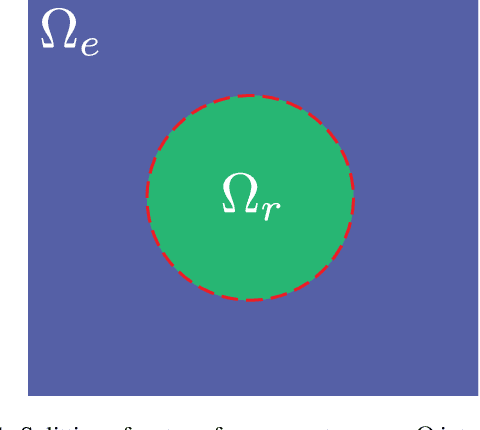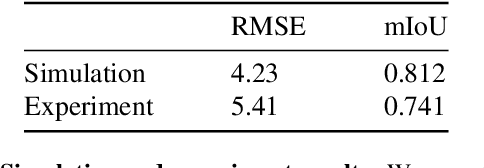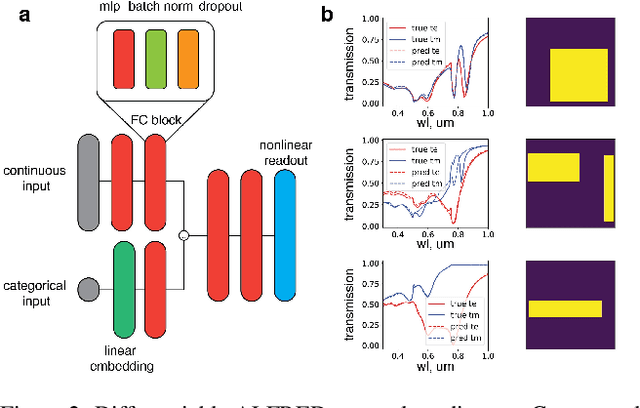Andrea Fratalocchi
Quantum-activated neural reservoirs on-chip open up large hardware security models for resilient authentication
Mar 21, 2024Abstract:Quantum artificial intelligence is a frontier of artificial intelligence research, pioneering quantum AI-powered circuits to address problems beyond the reach of deep learning with classical architectures. This work implements a large-scale quantum-activated recurrent neural network possessing more than 3 trillion hardware nodes/cm$^2$, originating from repeatable atomic-scale nucleation dynamics in an amorphous material integrated on-chip, controlled with 0.07 nW electric power per readout channel. Compared to the best-performing reservoirs currently reported, this implementation increases the scale of the network by two orders of magnitude and reduces the power consumption by six, reaching power efficiencies in the range of the human brain, dissipating 0.2 nW/neuron. When interrogated by a classical input, the chip implements a large-scale hardware security model, enabling dictionary-free authentication secure against statistical inference attacks, including AI's present and future development, even for an adversary with a copy of all the classical components available. Experimental tests report 99.6% reliability, 100% user authentication accuracy, and an ideal 50% key uniqueness. Due to its quantum nature, the chip supports a bit density per feature size area three times higher than the best technology available, with the capacity to store more than $2^{1104}$ keys in a footprint of 1 cm$^2$. Such a quantum-powered platform could help counteract the emerging form of warfare led by the cybercrime industry in breaching authentication to target small to large-scale facilities, from private users to intelligent energy grids.
Artificial intelligence optical hardware empowers high-resolution hyperspectral video understanding at 1.2 Tb/s
Dec 17, 2023Abstract:Foundation models, exemplified by GPT technology, are discovering new horizons in artificial intelligence by executing tasks beyond their designers' expectations. While the present generation provides fundamental advances in understanding language and images, the next frontier is video comprehension. Progress in this area must overcome the 1 Tb/s data rate demanded to grasp real-time multidimensional video information. This speed limit lies well beyond the capabilities of the existing generation of hardware, imposing a roadblock to further advances. This work introduces a hardware-accelerated integrated optoelectronic platform for multidimensional video understanding in real-time. The technology platform combines artificial intelligence hardware, processing information optically, with state-of-the-art machine vision networks, resulting in a data processing speed of 1.2 Tb/s with hundreds of frequency bands and megapixel spatial resolution at video rates. Such performance, validated in the AI tasks of video semantic segmentation and object understanding in indoor and aerial applications, surpasses the speed of the closest technologies with similar spectral resolution by three to four orders of magnitude. This platform opens up new avenues for research in real-time AI video understanding of multidimensional visual information, helping the empowerment of future human-machine interactions and cognitive processing developments.
Real-time Hyperspectral Imaging in Hardware via Trained Metasurface Encoders
Apr 05, 2022



Abstract:Hyperspectral imaging has attracted significant attention to identify spectral signatures for image classification and automated pattern recognition in computer vision. State-of-the-art implementations of snapshot hyperspectral imaging rely on bulky, non-integrated, and expensive optical elements, including lenses, spectrometers, and filters. These macroscopic components do not allow fast data processing for, e.g real-time and high-resolution videos. This work introduces Hyplex, a new integrated architecture addressing the limitations discussed above. Hyplex is a CMOS-compatible, fast hyperspectral camera that replaces bulk optics with nanoscale metasurfaces inversely designed through artificial intelligence. Hyplex does not require spectrometers but makes use of conventional monochrome cameras, opening up the possibility for real-time and high-resolution hyperspectral imaging at inexpensive costs. Hyplex exploits a model-driven optimization, which connects the physical metasurfaces layer with modern visual computing approaches based on end-to-end training. We design and implement a prototype version of Hyplex and compare its performance against the state-of-the-art for typical imaging tasks such as spectral reconstruction and semantic segmentation. In all benchmarks, Hyplex reports the smallest reconstruction error. We additionally present what is, to the best of our knowledge, the largest publicly available labeled hyperspectral dataset for semantic segmentation.
 Add to Chrome
Add to Chrome Add to Firefox
Add to Firefox Add to Edge
Add to Edge